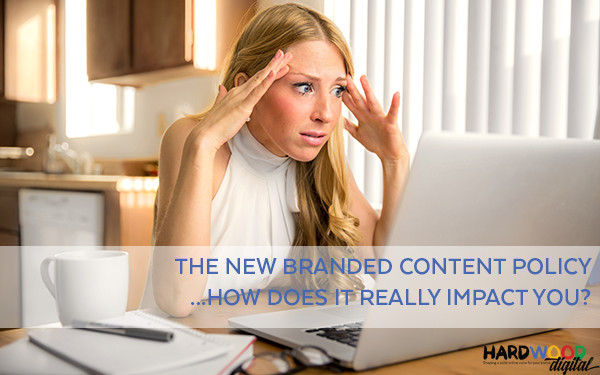Last week Facebook published an update to its Branded Content Policy, the policy is concise and to the point BUT it’s caused a lot of confusion. What the policy says is not confusing, it’s what people have read into what’s not been said that’s caused the stir.
What is this policy that has people scratching their heads?
Three lines:
“Branded content on Pages is only allowed from Verified Pages (with the blue badge) on Facebook and must adhere to the following policies.
Branded content on Pages is defined as content originating from a Page owner that features third party products, brands, or sponsors that are different from the Page owner.
When posting non-prohibited branded content integrations, Pages must use the Branded Content tool to tag the featured third party product, brand, or sponsor.”
On face value the policy is scary for non ‘blue verified’ bloggers and other influencers who earn income through creating sponsored content on behalf of third party brands, you guys can breathe easy because this policy doesn’t actually impact you. However, what is important is that you maintain best practice disclosure of any commercial arrangements.
If you’re a business you can happily continue to share content from other businesses that you feel is relevant to your audience and work with influencers to create sponsored content. These are important and often powerful ways of boosting your businesses online profile.
If you’re a blogger who works with brands and is not ‘blue verified’ that’s all you need to worry about. However, there are certainly several points in all of this that are worthy of discussion.
What is Branded Content anyway?
Besides there being no explicit reference to what you can/can’t do if you aren’t ‘blue verified’ I see the main source of confusion as being the definition of branded content and how it differs from sponsored content.
Going away and doing the research, trying to differentiate between the two quickly lead to tail chasing.
“Branded content on Pages is defined as content originating from a Page owner that features third party products, brands, or sponsors that are different from the Page owner.” – Facebook
“Branded content is a form of advertising that uses the generating of content as a way to promote the particular brand which funds the content’s production.” – Wikipedia
“Branded content is any content that can be associated with a brand in the eye of the beholder.” – Branded Content Marketing Association
StackAdapt suggest that: “Branded content ‘lives’ on brand-owned properties, while sponsored content is integrated into the publisher’s site.” and “Branded content reaches the brand’s audience. Sponsored content reaches the publisher’s audience.”
Finally Content Marketing Institute ask that it’s a term we stop using altogether because it’s confusing.
In the context of Facebook policy branded content created by a brand about a brand was always okay. It’s the inclusion of third party references that changes things.
At the end of the day the brand being promoted is the one paying for the content to be created irrespective of whether it’s considered to be ‘branded content’ or ‘sponsored content’. Branded content is likely to have a strong storyline associated with it and realistically, in most cases, branded content is also going to be sponsored content. In Facebook policy terms they’re essentially the same because the policy is referring to featured third party products, etc.
Clear?
The intent of the Facebook Branded Content policy and introduction of the Branded Content tool is to facilitate transparency of relationships and enable access to insights and promotional tools for all parties involved.
What does the Facebook Branded Content Tool do?
On one hand it discloses a commercial partnership and on the other hand it allows both parties to promote a Facebook post and access the insights.
It’s a brilliant tool that allows a business to easily leverage an influencer’s content and What audience and get real time feedback on performance.
With any luck the tool will be rolled out to all verified pages at some stage because there is just as much merit in content collaborations between two businesses as there are in relationships between big name brands and influencers.
The good news is that there is nothing stopping you, as a business, creating collaborative or sponsored content in conjunction with an influencer or another business right now. The even better news is that there are tools within the business manager that allow you to leverage your collaborator’s audience.
What else should you consider here?
The panic that ensued following the policy update was a good reminder about the potential impacts of being overly reliant on social media for reaching your audience. Algorithms and policies change, accounts get hacked and digital data Armageddon does happen.
Creating a solid and secure home base on your website and building an email database of your own are essential elements of a complete online presence.
However, fear of changes shouldn’t stop you establishing an engaged audience on social media because it is absolutely the best place to initially attract and grab the attention of your ideal clients or readers. It’s also an ideal place to build trust and authority one little piece of content at a time, that’s not something I see changing in the foreseeable future.


